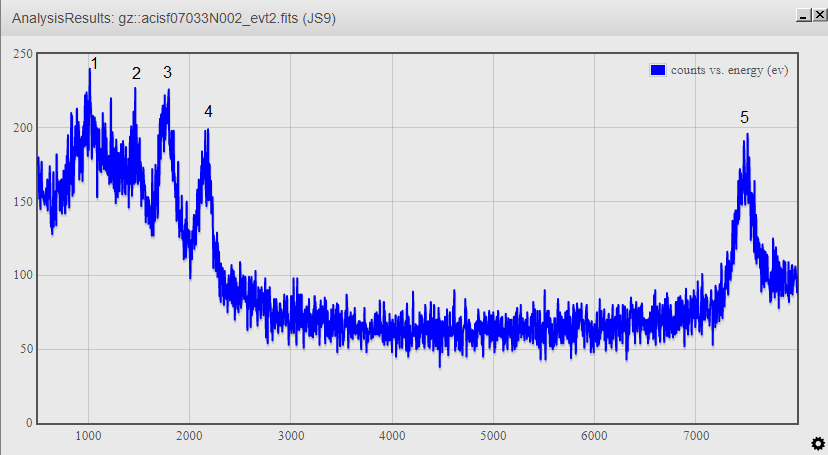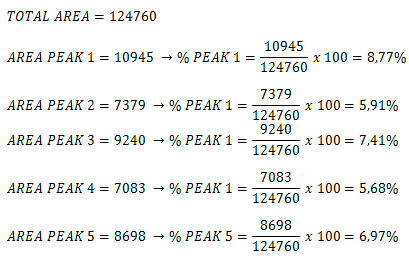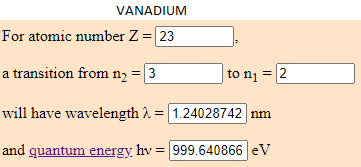IC 1805, also known as The Heart Nebula, is an emission nebula showing glowing ionized hydrogen gas and darker dust lanes. It was discovered by William Herschel on 3rd November 1787.
This is its energy spectrum from JS9 with its most importants energy peaks.

Then, I have calculated each peak's percentatge and find out which elements they contain.
I have used this formula:
 |
|
Here are my results:
 |
|
This nebula has:
- 8,77% of Vanadium (V) which energy is 999.6408 eV.
- 5,91% of Nickel (Ni) which energy is 1481.5093 eV.
- 7,41% of Gallium (Ga) which energy is 1815.9827 eV.
- 5,68% of Arsenic (As) which energy is 2057.8618 eV.
- 6,97% of Samarium (Sa) which energy is 7263.9309 eV.
COMPARISON
I have search for scientific articles that explain which chemical elements are in IC 1805. Although I have not found any that say the element it has, I have deduced that, according to The open cluster IC 1805 and its vicinity: investigation of stars in the Vilnius, IPHAS, 2MASS, and WISE system by V. Straižys et al (2013), the nebula contains a carbo,n oxigen and hydrogen.
In comparison with my results, they does not match with the article.
- Based on my investigation, this nebula is form of vanadium, nickel, gallium, arsenic and sumarium.
- What I have done is to find the eV of the tallest peaks of the JS9 energy spectrum and discover what element corresponds to that enery.
|
|
 |
 |
|
|
|
I have calculated the electronvolt of this elements with the transition predetermined in this web (from the cap 3 to the 2). The atoms to jump from this capes have to be in a room temperature. Depending to the temperature, the element can have different quantum energy. What is the same, a eV number can be from different elements if they are moving arround differents capes.
It can be possible that the atoms are not moving from the capes I have work with and this might be the reason why my results does not match with the scientifics results.


